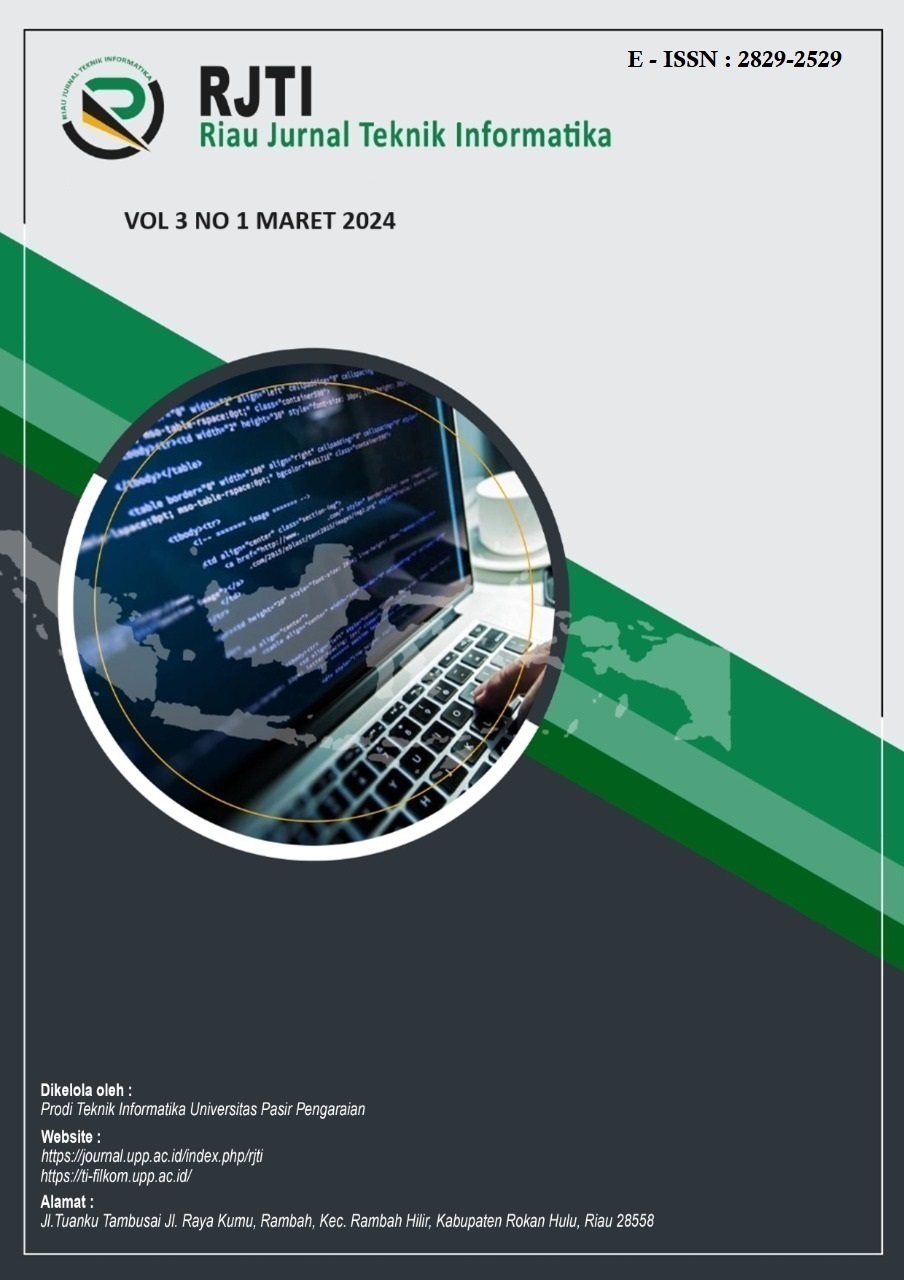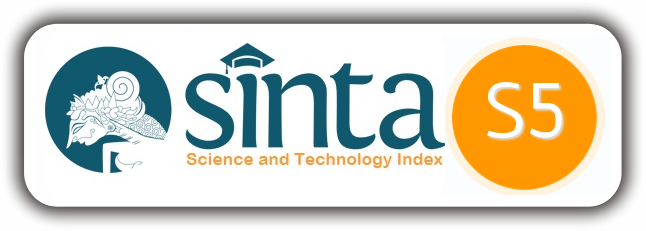Klasifikasi Ekspresi Wajah Menggunakan Convolutional Neural Networks (CNN) pada Dataset FER-2013
DOI:
https://doi.org/10.30606/rjti.v4i1.3252Abstract
Automatic facial expression recognition has become a rapidly growing research field driven by advancements in artificial intelligence and computer vision. However, facial expression classification still faces challenges, particularly in distinguishing expressions with similar characteristics. This study aims to develop a facial expression classification model using Convolutional Neural Networks (CNN) on the FER-2013 dataset. The research stages include data collection and preprocessing, CNN architecture design, model training using the Adam optimizer and categorical crossentropy loss function, and performance evaluation based on accuracy and the confusion matrix. The results indicate that the CNN model can recognize various facial expressions, achieving a maximum validation accuracy of 67.8%. Nevertheless, the model is still able to distinguish certain expressions accurately. Utilizing pretrained models such as VGG-16 or ResNet and implementing transfer learning techniques could enhance model accuracy and stability. With further development, this model has the potential to be applied in various fields, including facial expression-based security systems, human-computer interaction, and emotion analysis.
Downloads
References
Akbar, Ahmad Taufiq., Saifullah, Shoffan., & Prapcoyo, Hari. (2024). “Klasifikasi Ekspresi Wajah Menggunakan Convolutional Neural Network”. Jurnal Teknologi Informasi dan Ilmu Komputer (JTIIK, 11)(6), 1399-1412.1399-1412. 10.25126/jtiik.1168888.
Prasetyawan, Daru., & Gatra, Rahmadhan. (2022). “Model Convolutional Neural Network untuk Mengukur Kepuasan Pelanggan Berdasarkan Ekspresi Wajah”. Jurnal Teknik Informatika dan Sistem Informasi, 8(3), 661-673. 10.28932/jutisi.v8i3.5493.
Alamsyah, Derry., & Pratama, Dicky. (2020). “Implementasi Convolutional Neural Networks (CNN) untuk Klasifikasi Ekspresi Citra Wajah pada FER-2013 Dataset”. Jurnal Teknologi Informasi, 4(2), 350-360. 10.36294/jurti.v4i2.1714.
Nugroho, Pulung Adi., Fenriana, Indah., & Arijanto, Rudy. (2020). “Implementasi Deep Learning Menggunakan Convolutional Neural Network (CNN) pada Ekspresi Manusia.” Jurnal Algor, 2(1), 12-20
Guntoro, Al., Julianto, Edy., & Budiyanto, Djoko. (2022). “Pengenalan Ekspresi Wajah Menggunakan Convolutional Neural Network”. Jurnal Informatika Atma Jogja, 3(2), 155-160.10.24002/jiaj.v3i2.6790.
Maulana, Irfan, Khairunisa, Nabila, & Mufidah, Ratna. (2023). “Deteksi Bentuk Wajah Menggunakan Convolutional Neural Network (CNN). JATI (Jurnal Mahasiswa Teknik Informatika), 7(6), 3348-3355.
Fadilla, Muhammad Andika., Setiawan, Herri., & Ramadhan, Mustafa. (2023). “Implementasi Metode Convolutional Neural Network (CNN) pada Sistem Deteksi Emosi dari Ekspresi Wajah Manusia dengan Aplikasi Android sebagai Antarmuka Pengguna”. Jurnal Ilmu Komputer dan Sistem Informasi, 9(4), 126-138
Niasmara, Jeptika Heni., & Nuryana, I Kadek Dwi. (2024). “Sistem Deteksi Ekspresi Siswa dalam E-Learning Menggunakan Metode Convolutional Neural Network (CNN)”. JINACS: Journal of Informatics and Computer Science, 6(2), 551-560
Yulestiono, Achmad Yusuf., Subagio, Moh. Mario., Bhakti, Mulyani Satya., & Sari, Anggraini Puspita. (2024). “Perbandingan Kinerja Metode Convolutional Neural Network (CNN) dan VGG-16 dalam Klasifikasi Rambu Lalu Lintas”. JAMASTIKA, 3(2), 79-90
Pramuditha, Adeyuni Zada., Suroso., & Fadhli, Mohammad. (2024). “Deteksi Wajah Dengan Model Arsitektur VGG 19 Pada Metode Convolutional Neural Network. Sistemasi: Jurnal Sistem Informasi”, 13(5), 1998-2007.
Hidayati, K. (2020). “Pengenalan wajah menggunakan metode Local Binary Pattern (LBP) dan Principal Component Analysis (PCA) untuk citra berkualitas buruk” Universitas NegeriSemarang: Tugas Akhir
Downloads
Published
How to Cite
Issue
Section
License
Copyright (c) 2025 Hizkia A.L. Kodoati, Chezkiel T.C. Rengkung, Gerald Takalamingan, Dkk

This work is licensed under a Creative Commons Attribution-ShareAlike 4.0 International License.
Riau Jurnal Teknik Informatika provides open access to anyone so that the information and findings in these articles are useful for everyone. This journal's article content can be accessed and downloaded for free, free of charge, following the creative commons license used.

Riau Jurnal Teknik Informatika is licensed under a Creative Commons Attribution-ShareAlike 4.0 International License.









